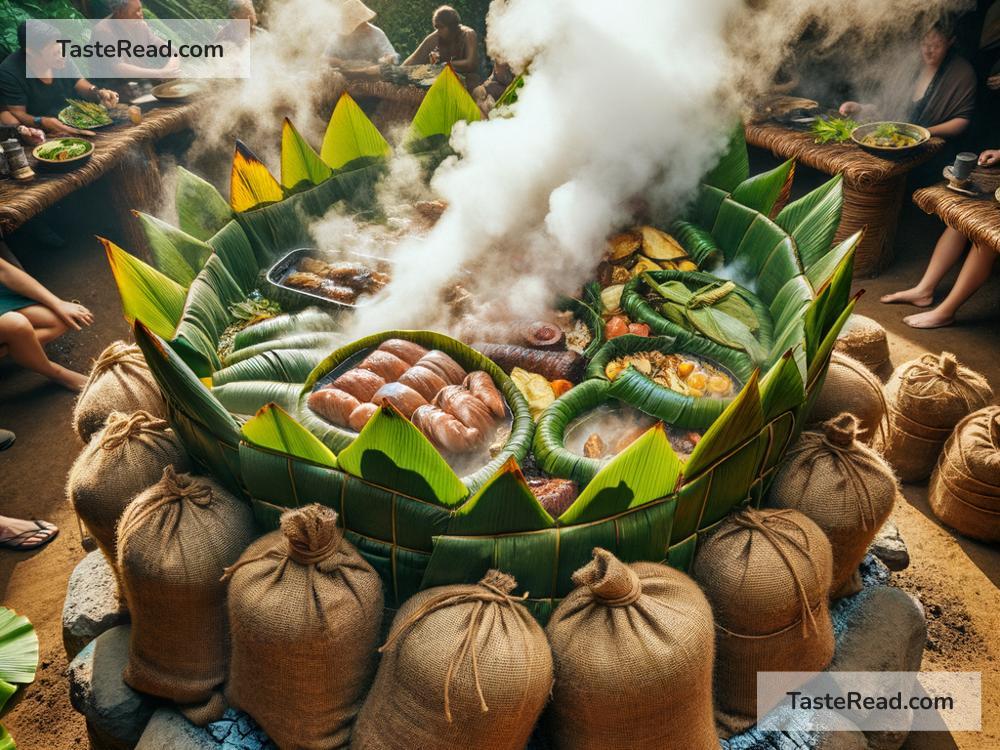The Art of Traditional Maori Hāngi Cooking in New Zealand
New Zealand is famous for its stunning landscapes, rich Maori culture, and unique foods. One of the best examples of Maori cooking is the hāngi, a traditional method of preparing food using heated stones buried in the ground. The hāngi is more than just cooking — it’s a method rich in history, culture, and community spirit.
In this blog, we’ll explore what the hāngi is, how it is made, and why it’s so special to the Maori people.
What is a Hāngi?
A hāngi is a traditional Maori way of cooking food that dates back hundreds of years, long before ovens and stovetops were available. This underground cooking method involves steaming food using hot stones buried in the earth. Typically, meat, vegetables, and sometimes puddings are cooked in this way.
The flavors created by the hāngi are unique. Because the food cooks slowly in the earth, it absorbs smoky, earthy notes from the process, creating tender and flavorful dishes. It’s not just about the food, though — hāngi cooking is often part of family gatherings, celebrations, and ceremonial occasions, making it an important tradition for Maori people.
How is a Hāngi Made?
Making a hāngi takes time, preparation, and teamwork. It’s not as simple as turning on an oven — it’s a hands-on process that connects people to the earth and to one another. Let’s break it down step by step:
1. Preparing the Pit
First, a hole is dug in the ground to create the hāngi pit. The size of the hole depends on how much food will be cooked. For small gatherings, the pit can be modest, but larger hāngi pits are used for community events or special occasions.
2. Heating the Stones
Large stones are chosen for their ability to hold heat. These stones are placed in the pit along with wood or other fuel, which is set on fire. This step heats the stones until they are red-hot — they need to be extremely hot to properly cook the food.
3. Wrapping the Food
Food is prepared and wrapped in aluminum foil, muslin cloth, or flax leaves (traditionally used in the past). Popular hāngi foods include lamb, chicken, pork, potatoes, kumara (sweet potatoes), cabbage, pumpkin, and stuffing. Maori people often layer the food baskets, starting with meats at the bottom and vegetables at the top. The layers help distribute the heat evenly during cooking.
4. Assembling the Hāngi
Once the stones are hot enough, they are carefully arranged in the bottom of the pit. The food baskets are then placed on top of the stones. Next, the baskets are covered with wet cloths or sacks to trap the steam inside. Finally, soil is shoveled over the entire pit to seal it and keep the heat and moisture contained.
5. Cooking Time
The food cooks underground for 3-4 hours, depending on the size of the hāngi and the amount of food. During this time, the heat from the stones and the trapped steam slowly cooks everything to perfection.
6. Unveiling the Hāngi
When the cooking time is up, the pit is carefully uncovered, and the mouthwatering aroma of the hāngi fills the air. The food is then removed, unwrapped, and served to the eager crowd.
Why is the Hāngi Special?
The hāngi isn’t just about food — it’s a cultural tradition that has been passed down through generations of Maori people. While modern ovens and microwaves have made cooking faster and easier, the hāngi remains an important part of Maori identity.
In Maori culture, food has always been closely tied to family, community, and the land. The process of making a hāngi often involves a group effort, with people working together to prepare the pit, build the fire, wrap the food, and uncover the meal. It’s an occasion that brings people together and celebrates shared experiences.
Additionally, the hāngi has spiritual significance because it uses elements of nature — earth, fire, water, and air. Maori people see themselves as caretakers of the land (known as kaitiaki), and the hāngi is an example of working in harmony with the earth to prepare nourishment.
Hāngi in Modern Times
While hāngi cooking is still practiced at traditional gatherings, it has also gained popularity among visitors to New Zealand. Tourists can experience this unique cooking method at cultural events and tours, where they taste authentic Maori food and learn about its significance.
In some cases, modern hāngi techniques have been developed to make the process easier. For example, gas-heated hāngi ovens mimic the flavors of traditional hāngi cooking without needing to dig a pit or bury food. However, many people prefer the traditional method because it connects more deeply to Maori customs and the land.
Conclusion
The hāngi is more than just a way to cook food — it’s a way to honor history, community, and the land. By combining natural elements and teamwork, Maori people have created a cooking tradition that reflects their values and way of life. Whether you’re eating a hāngi at a Maori celebration or trying it for the first time as a visitor to New Zealand, it’s an unforgettable experience that gives you a taste of Maori culture.
So, if you ever find yourself in New Zealand, be sure to try a hāngi. It’s not just a meal — it’s a tradition that connects you to the heart and soul of the country.


